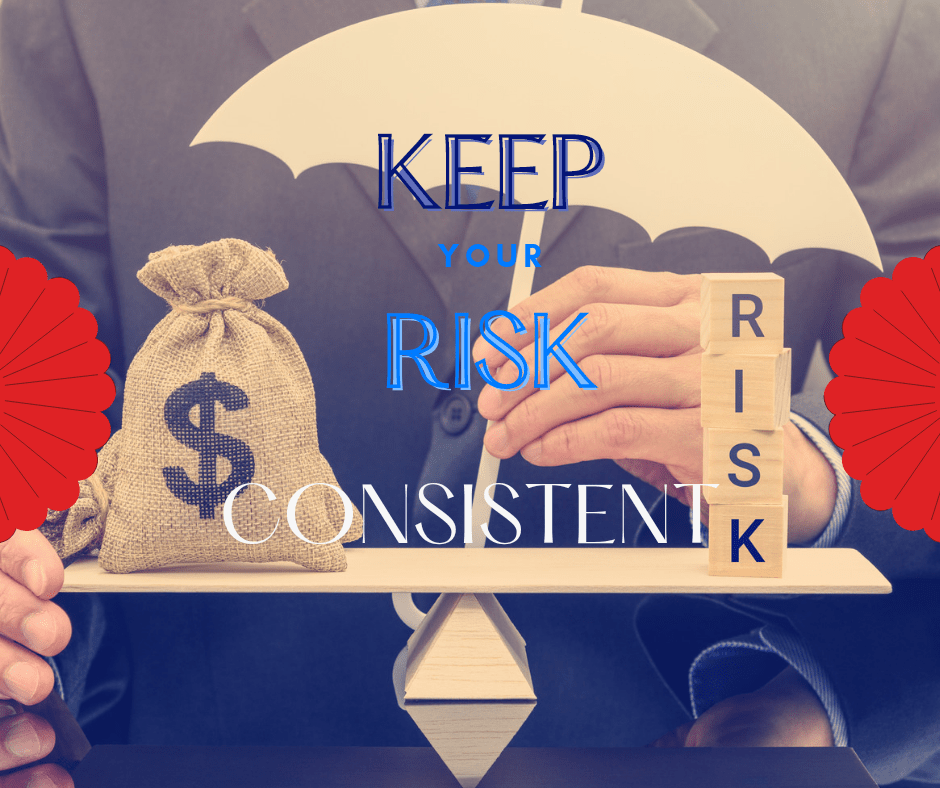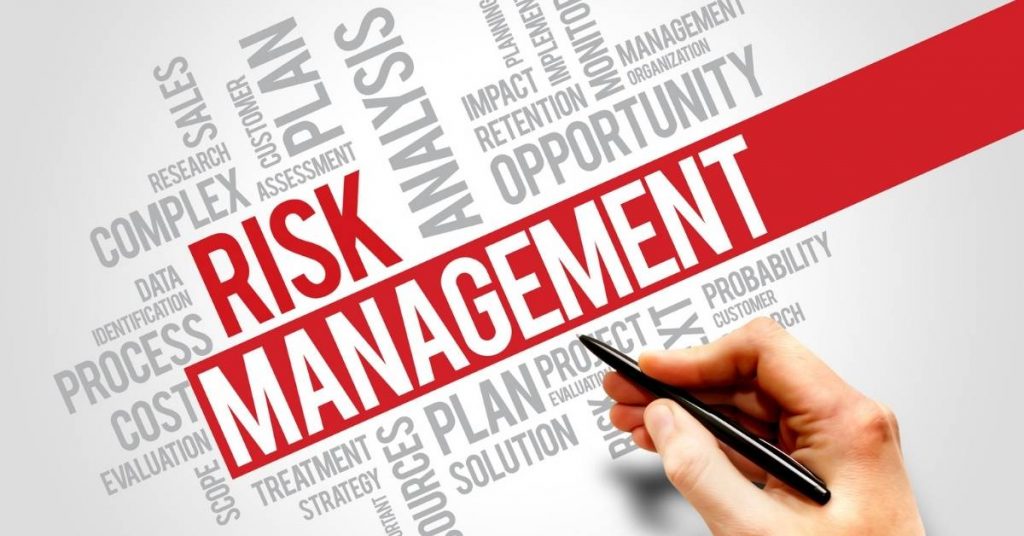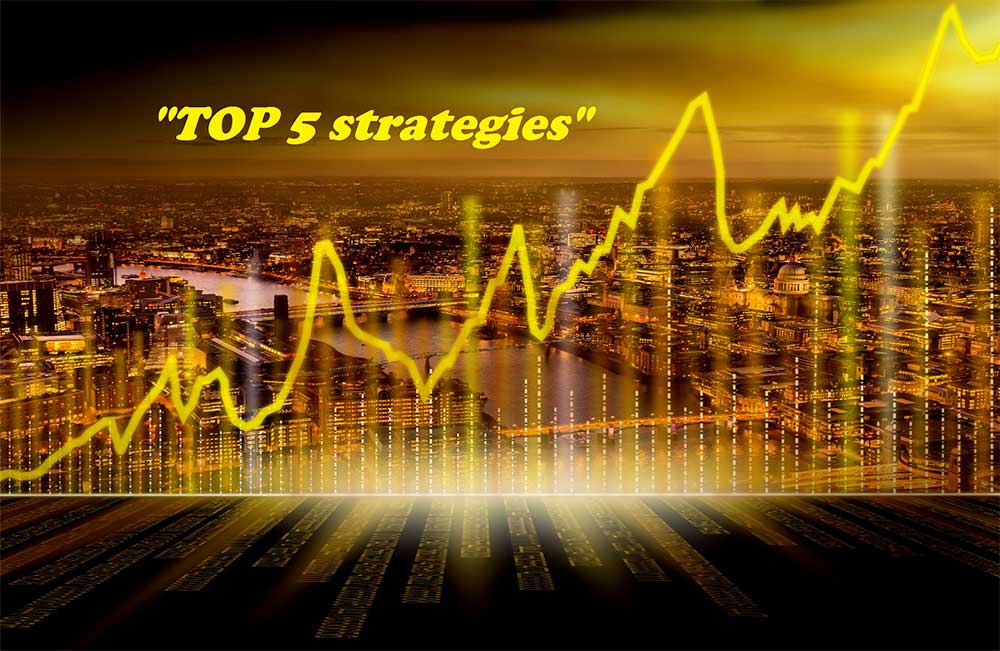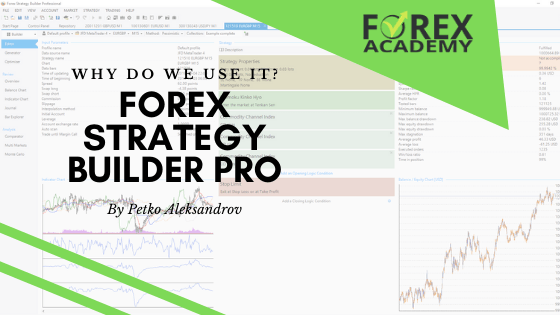Risk management strategies help traders to make more money. Sometimes, losses take place because of events that could have been prevented. By controlling risk, traders can prevent unnecessary losses.
Education in risk management is important. Traders who take the time to learn about the precautions that can prevent losses will improve their profitability. Both beginners and experienced traders can lose money if they don’t use risk management techniques while trading.
Table of contents
What is risk management in trading?
Risk management involves using specific processes to reduce losses. These strategies let traders maintain their ideal reward/loss ratio. Without risk management, traders could lose all of the money that’s in their account.
There are different risk management strategies that traders can use. The ones that you choose most often, will depend on several factors. For example, some might just work better for your personality.
Others might work better for your trading style. If you often use Expert Advisors, there are risk management techniques that work very well with that. There are Expert Advisors created for MetaTrader 4, that help you to control the risk of your trades.

Every trader must consider reward/risk ratios. Even an extremely talented trader can blow their capital on one bad call. Traders must backtest their strategies. They must also consistently apply the rules that apply to each strategy. Sometimes that’s easier with EAs.
Assess your Own Risk Tolerance
Traders can all tolerate different levels of risk. Some people have a lot of experience with trading, so they have a sense of when trades are going to go badly. If you’re a beginner, you might not have developed that ability to assess trades quickly as yet.
Similarly, someone may be able to tolerate a higher level of risk because of their age. Likewise, if you’re a trader who doesn’t have a lot of cash to lose, your risk tolerance will be a bit different from someone who is willing to lose a lot more money.
Choose the Right Broker
Traders use risk management to reduce their losses. Choosing the right broker is an important factor. If you trade often, you’ll constantly lose money if you have an account with a broker that supports passive traders.
You’ll lose money from the type of fees that they charge. If they don’t execute your orders quickly, you’ll also lose money.
However, you’ll decrease your losses if you choose a broker that offers the right analytical tools. Those tools will help you to gain insights and assess the market correctly, so you can decide which trades to enter and which to avoid.
Reward: Risk Ratio
Your reward: risk ratio should allow you to stay in the market for as long as possible. Many traders aim for a reward: risk ratio of at least 2:1. This means that their profits are double their losses. So, for example, if they make a profit of $100, their losses equal $50.
It’s even better to aim for a reward: loss ratio of 3:1. Your profits would be triple your losses. You should always work out the risk: reward ratio before making an investment. If it’s not in your favor, don’t enter the trade.
Set your Stop Loss and Take Profit Points
It doesn’t matter whether you’re trading with $500 or $5,000. If you don’t practice good money management, you could lose your capital. Use the right amount of leverage, so if a trade goes in the wrong direction, your losses aren’t magnified by more than you can manage.
Traders want to be successful. To do that, they have to know what price they’re willing to sell at. They need to decide what they’re willing to pay. They also take the time to work out the probability that the asset will reach their goals.
If you don’t know what points will let you sell for a profit or loss, you’re less likely to succeed. Your decisions won’t be based on rules that you’ve set. They’ll be based on how you feel. Trading based on your emotions is harmful to your capital.
So, always set your Stop Loss (SL) levels. Similarly, your Take Profit (TP) levels should also be set with optimism and caution. By setting the price at which you’ll exit, you avoid the temptation to stay in for longer than you should, just because things look good.
Psychological Risk Management Strategies – Control your Emotions
Your emotions can lead you to wipe out your entire account. Don’t blame events on the market. You have a certain level of control over what happens to you in trading. That starts with controlling your thoughts and emotions.
It starts with being accurate about what you’ll encounter. If you know you’re entering a volatile market, your trading strategy should take that into account. you’ll also need to exercise discipline and stick to the strategy that you carefully developed. Control your emotions and don’t let them control the trade.
If you stay in a trade when you should leave, it could continue to go badly. In that case, you’ll lose a lot more money than if you had exited two hours before. Don’t stay with the trade, hoping that it will get better when that goes against the rules you’ve already set.
Mental Risk Management Strategies – Plan Every Trade
Never jump into a trade because it seems like a good idea if you haven’t planned it completely. The secret to winning battles is planning them first.
Don’t just plan your trades. Always trade what you plan, no matter which market you’re in. If you make a plan but don’t stick to it, the results will be similar to those that you get when you don’t have a plan at all.
The 1% Rule
Successful traders use the 1% Rule. This says you shouldn’t put more than 1% of your capital into a trade. So, if you have a broker that lets you open an account with $100, you might only have that sum in your account. If you use the 1% rule, you wouldn’t use more than $1 on a trade.
That might sound like it’s not so exciting. However, you’ll limit your losses if you stick to that rule. If you want to put $100 into a trade, you should have $10,000 in your account.
Calculate your Expected Return
You’ll always need to know if a trade is worth it. If you calculate your expected return, you’ll not only have a better idea of how much you could make. You’ll also think through the trade carefully and rationalize each step.
The formula uses details such as the probability of loss and probability of gain. Information on historical breaks from support and resistance levels can help you to find these probabilities.
After you calculate your expected return, you can compare it with that for other opportunities. After that, you can decide which asset to trade.
Risk Management Strategies – Diversification
You should always practice diversification. For example, if you trade in the Forex market, don’t stick to just one currency pair all the time. Although doing that has its advantages, it opens you up to other problems as well. For example, if the currency pair that you choose is subject to political manipulation, it will affect your trading strategies.
Several traders trade in more than one market. For example, they might trade Forex and stocks. Some trade stocks and futures contracts. Others trade currency derivatives and forward contracts. Trading in different markets gives you more stability when something temporarily affects one of the markets.
Diversify by Region and Market Cap
In addition, you can diversify by trading in different geographic regions. If you like to trade stocks, there are several exchanges that you can trade on. Sometimes you’ll also find opportunities in some stock markets that are not available in others.
Traders can also diversify in terms of market capitalization. If you trade crypto, this is one way to diversify. For example, Bitcoin has a large market cap. However, many of the new cryptos have a small market cap. Many crypto traders who want to diversify within crypto have a mix of assets with large market caps, such as ETH and BTC, and those with smaller market caps, such as Electroneum and FunFair.

Diversifying your trading doesn’t just protect you. It also gives you opportunities. For example, if you are a crypto trader who only likes large market cap cryptos, you’ll miss out on all that other altcoins have to offer to you. In recent times, small market cap cryptos have been very bullish. In fact, some of the newer cryptos have grown significantly.
However, even diversifying the large market cap cryptos that you hold can help. Binance Coin grew by over 1,300% in 2021. It performed better than Ether and Bitcoin. In fact, Binance’s Smart Chain ecosystem took some of Ethereum’s market share in 2021. Always do your due diligence as you diversify.
Risk Management Strategies – Hedging
Hedging is one of the risk management strategies that traders sometimes don’t use as often as they could. Traders who use hedging to reduce their risk may trade options and futures for this purpose. That’s because, with options, they have the right to take a particular action but they’re not obligated to do so.
For example, suppose someone grows her own corn. However, she’s worried that the price of corn will drop by the time she’s ready to sell it. She could take out an option to sell her corn at the current market price. That way, even if the price of corn drops later, she wouldn’t lose money.
Hedging gives your entire portfolio protection. Protecting your portfolio is just as important as putting plans in place to help it grow. However, there’s a drawback. The reduction in risk also results in a reduction in potential profits.
Traders who hedge offset losses by taking an opposite position in a related asset. While hedging has a cost attached, traders view it as a form of insurance. If a negative event actually happens, the impact of it is reduced. However, with insurance, you’re completely compensated for your losses. That doesn’t happen with hedging.
Only Trade with Cash That You Don’t Need
The cash that you use for trading should never be money that you need. In other words, if you’re thinking of trading with money that you need to pay your bills, don’t do it. Doing so changes your thinking completely.
Your brain chemistry will change. So will your approach to the trade. Instead of exiting when a trade is going sideways, you’re more likely to stay in a bad trade, hoping that it will change. That’s because you’ve already put so much into it.
Keep your Risk Consistent
Always keep your level of risk consistent. If you keep it low most of the time but then stop doing so with just one trade, you could lose a lot of money.

As you experience success in trading, you might start to become more confident. However, don’t let it affect your thinking. Always stick close to the same level of risk that worked for you when you were just beginning.
Overconfidence can cause you to change your risk assessment rules for no good reason. Also, stick to your money management rules. Don’t change them if they’ve consistently brought you good returns.
Use the Right Amount of Leverage
Many traders use leverage because they want to increase their gains without risking a large sum of money. However, with leverage, you’ll also increase your losses. Be very cautious with leverage.
While you can trade more money than your initial deposit, you could also lose more than you initially deposited with some traders. This is because some brokers don’t have negative balance protection in place.
While your broker may allow you to put aside as much as 10% of your total capital, this will put you at too much risk. Try to stick to leverage of 1:30, especially if you’re a new trader.
Consider Correlations
There’s a correlation between some assets. For example, in Forex, some currency pairs are correlated. Knowing how one asset’s price changes in relation to another will help to protect you from surprises.



